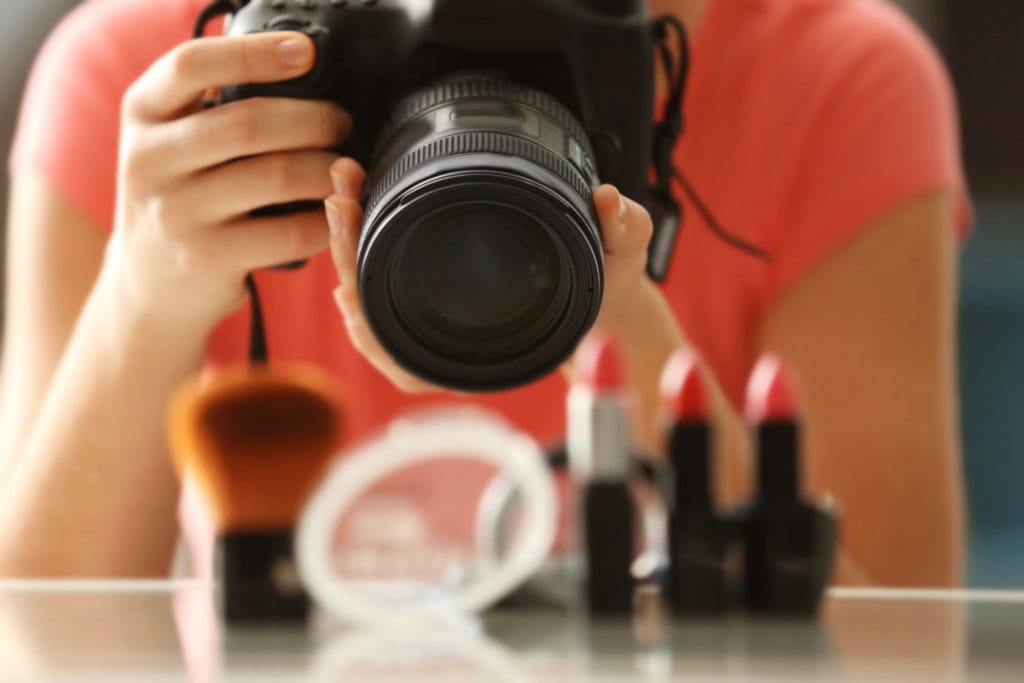Online selling has doubled since the pandemic started. That means that all the products consumers normally would buy in-store now need to be online in order to compete with big companies like Amazon.
Are you looking to bring your products online? Keep reading for the do’s and don’ts of product photography.
How to Take Product Photos: The Do’s
You’ll find many different tips and tricks on product photography. However, these basic do’s and don’ts are great even if you aren’t the photographer. If you are the owner or marketer approving the images, you’ll need to know what to look for as well.
The Do’s on Cameras and Lenses
Even if you take good care of your camera and lenses, you will still find particles on your lens from time to time.
Make sure you clean your lens before each session. It is vital to the clarity of the image. Yes, you can edit out some blemishes, but the first step to a crisp and clear image is to clean your lens.
Pro tip: Use a fibreless cloth to clean your lenses.
The Do’s on Editing
There is rarely a photograph that does not need editing. Even if the photographer is a professional, adjusting the brightness and highlights can go a long way, but make sure you brush up on your editing skills before editing any photos.
Pro tip: Shoot your images in RAW format instead of JPEG to aid with your editing.
The Do’s on Angles
Product photography should have images of each angle of the product. Try not to shoot the product at eye level; instead, try to create a larger-than-life image of the product to impress the consumer.
The best way to do this is to use the “hero shot.” This is usually the main photo that you’ll shoot of the product.
The best way to create a hero shot is to take the photo from a low angle. Either at the same level or below the surface and angeling the camera up.
Pro tip: Look at what your competitors have, and mimic the best shots.
The Do’s on Backgrounds
A standard in the product photography industry is to use a white background. The reason for this is that it brings all of the focus back to the product.
Pro tip: Buy a roll of white paper from your local art store.
The Do’s on Lighting with Product Photography
Good lighting is key in photography. You can have the most expensive camera money can buy, but if you do not have the proper lighting, you’ll end up with grainy pictures.
You don’t necessarily need to invest in thousands of dollars worth of lighting equipment; you can invest in something cheaper. For example, some desk lamps or construction lamps will do the trick as well.
Pro tip: Set your White Balance to Auto on your camera for consistency.
How to Take Product Photos: The Don’ts
If you follow the do’s above, you’ll get some stunning results. However, let’s look at some things you should avoid while shooting commercial product photography.
The Don’ts on Cameras and Lenses with Product Photography
If you can avoid it, don’t use a phone camera. They are great for social gatherings and personal events. However, the use of a phone camera can distort the picture and give it off proportions.
Pro tip: Buying used gear can help stretch the budget.
The Don’ts on Editing with Product Photography
Don’t over-edit your photos. Overediting the images will make them look fake and staged. Of course, you might be thinking, “The photos are staged.” But in order to sell your product, you’ll want the most natural-looking images to establish authority and trust.
Pro tip: Less is more; this goes for editing as well.
The Don’ts on Angles
Try not to use boring mainstream angles. As mentioned before, use at least one “hero shot” and take pictures from different angles.
The point of different angles is to highlight the product; this is different with each product, so use your best judgment. Do your best to be creative.
Pro tip: Try to take at least one picture in a natural setting to show off the product in its “natural habitat.”
The Don’ts on Backgrounds with Product Photography
As mentioned above, white backgrounds are the best way to go. However, some products don’t work well with a white background, or perhaps you are shooting an “in-use” shot of the item.
In these cases, don’t go over the top. Remember that the product should be the focus. It should not get lost in all the noise.
Pro tip: When shooting an “in-use” photo, use a background with neutral colors to avoid drawing attention away from the product.
The Don’ts on Lighting with Product Photography
The best rule of thumb is to use external lighting. Try not to use the built-in flash of your camera. As mentioned above, you can buy great lighting on a budget.
If the product has a shiny surface, ensure that the light is not reflected on the photo. Avoid a glare as much as possible.
Pro tip: Don’t use a flash or light head-on. Always have the lights positioned differently from the camera.
Do You Need Professional Product Photography?
These do’s and don’ts can bring you a long way in creating picture-perfect product photography. However, sometimes we all need some help to get our products out there.
Consider hiring a professional for your next products. Online shopping is the way to go, so don’t miss out on crucial sales because you don’t have your products online.
Contact us today to make an appointment.
Toronto Product Photographer Jules Marketing & Design Inc.
111 Tycos Drive Unit 105
Toronto ON M6B1W3
[email protected]
6479972793

